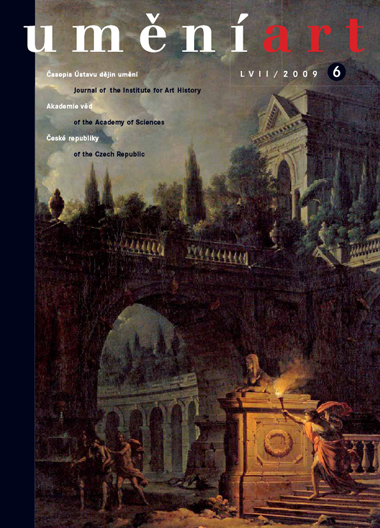Robert Šrek
Architektura veřejných staveb v Karlových Varech v letech 1780-1850
There are few examples of public building and spa structures built in the style of Classicist architecture that have survived to the present day in Karlovy Vary. We can gain some idea of the appearance of this popular resort in the first half of the 19th century mainly from the abundance of iconographic documentation and archival plans. The atmosphere that surrounded the development of the individual structures and shaped contemporaries' opinions on them can partly be traced in contemporary topographic literature. Over the course of several decades Karlovy Vary acquired an entirely new and modern façade. The need for both entertainment and comfortable facilities for the medically popular water 'cures' served as a stimulus for the construction of a number of community buildings and the almost permanent adaptation of buildings for spa purposes. For example, to help people while away the long time spent on a cure there was a theatre, which had its gala opening in 1788, and other central areas to spend time were built, such as the Post Yard (Poštovní dvůr), the Polish Hall (Polský sál), the Stone Hill Hall (Sál na Kamenném vrchu), King Charles' Hunting Hall (Lovecký sál císaře Karla), and the Hall of Friendship (Sál přátelství). Renovations to the canopies over the thermal springs were made first in the areas around the New Spring, the Theresien Spring, and the Palace Spring. The renowned Thermal Grounds and the Mill Spring received, with one exception, structural attention as part of the overall renovation of the spa facilities of Karlovy Vary that took place in the second half the 1820s and at the start of the 1830s. After that only minor structural work was done on the spring sources. Worth mentioning is the construction of the Gas Bath (Plynové lázně) in Dorotin Plains and the renovations to the newly discovered Market Spring (Tržní pramen). In addition, Karlovy Vary was also responsible for providing access routes to the town from other centres of the Empire and saw to maintaining the streets' stately appearance.
Full-text in the Digital Library of the Czech Academy of Sciences:
https://kramerius.lib.cas.cz/uuid/uuid:e366db81-6786-3da1-eabe-7fada22ac668
< back

